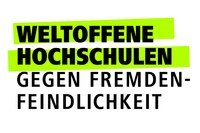Promotionsvorhaben
Wireless communication on the factory floor supporting agile production
Name
Eike Lyczkowski
Status
Abgeschlossen
Abschluss der Promotion
Erstbetreuer*in
Prof. Dr. Hannes Frey
Gutachter*in 2
Prof. Dr. Wolfgang Kiess
The trends of industry 4.0 and the further enhancements toward an ever changing factory lead to more mobility and fexibility on the factory foor. With that higher need of mobility and fexibility the requirements on wireless communication rise. A key requirement in that setting is the demand for wireless Ultra-Reliability and Low Latency Communication (URLLC). Example use cases therefore are cooperative Automated Guided Vehicles (AGVs) and mobile robotics in general.
Working along that setting this thesis provides insights regarding the whole network stack. Thereby, the focus is always on industrial applications. Starting on the physical layer, extensive measurements from 2 GHz to 6 GHz on the factory foor are per- formed. The raw data is published and analyzed. Based on that data an improved Saleh-Valenzuela (SV) model is provided. As ad-hoc networks are highly depended on node mobility, the mobility of AGVs is modeled. Additionally, Nodal Encounter Patterns (NEPs) are recorded and analyzed. A method to record NEP is illustrated.
The performance by means of latency and reliability are key parameters from an application perspective. Thus, measurements of those two parameters in factory envi- ronments are performed using Wireless Local Area Network (WLAN) (IEEE 802.11n), private Long Term Evolution (pLTE) and 5G. This showed auto-correlated latency values. Hence, a method to construct confdence intervals based on auto-correlated data containing rare events is developed.
Subsequently, four performance improvements for wireless networks on the factory foor are proposed. Of those optimization three cover ad-hoc networks, two deal with safety relevant communication, one orchestrates the usage of two orthogonal networks and lastly one optimizes the usage of information within cellular networks. Finally, this thesis is concluded by an outlook toward open research questions. This includes open questions remaining in the context of industry 4.0 and further the ones around 6G. Along the research topics of 6G the two most relevant topics concern the ideas of a network of networks and overcoming best-effort IP.





